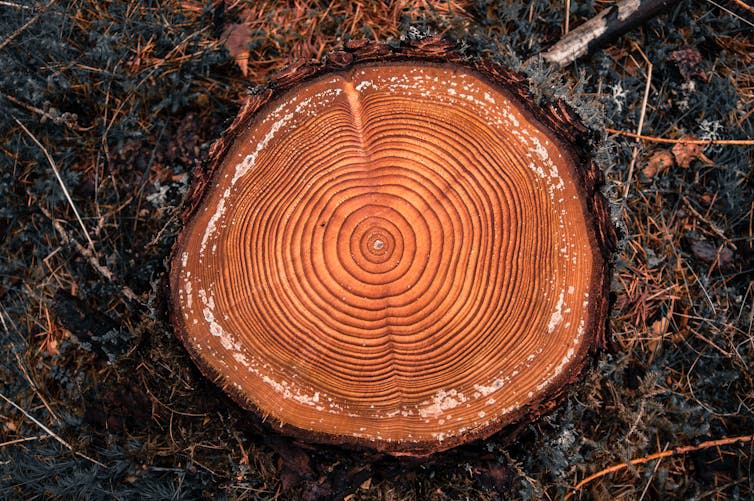The summer of 2023 was the warmest in non-tropical areas of the Northern Hemisphere for 2,000 years, a new study shows.
In this vast land area, spanning Europe, Asia and North America, surface temperatures in June, July and August 2023 were more than 2°C higher than the average summer temperature between 1 AD. and 1890, as reconstructed from tree-ring data.
Although climate change is a global phenomenon, warming is often stronger on a regional scale. And it is regional climate change, not global average temperature, that people are experiencing.
The Paris Climate Agreement aims to limit climate change to less than 2°C and ideally to 1.5°C of warming, but these figures refer to global temperature change, typically averaged over a 20-year period. The authors of the new study claim that these targets have already been exceeded on a regional scale during the Northern Hemisphere summer.
There were 2,295 deaths in Britain in the summer of 2023 due to five heatwaves. The authors of the new study wanted to understand how unusually warm the summer of 2023 was in the Northern Hemisphere compared to the past.
To do that, they turned to one of the most useful tools for measuring Earth’s temperature over thousands of years: rings that grow annually in tree trunks anywhere on the planet where the climate is seasonal.
Two millennia of tree rings
The extreme heat of 2023 was caused by greenhouse gas emissions and amplified by El Niño, the warm phase of a natural climate cycle in the Pacific Ocean.
To find out what the climate was like in the recent past, scientists analyze data from weather stations to see whether a given year was warmer or cooler than previous years. The longest instrumental record available is the Central England Temperature series and it only goes back to 1659, which isn’t long enough to put the recent warming in context.
To find out how warm it is now compared to two millennia ago, scientists use climate proxies. These are natural archives such as ice cores and sediments that record the climate in the layers they have built up over time.
Trees grow in many different places and sensitively record past climate information for much of the world. Trees grow one ring per year in seasonal climates, so there is no doubt about the date a particular ring formed.
To study past climate, tree ring scientists analyze how wide or narrow a ring is in a given year, how dense the wood is, or its chemical composition.

Tree ring growth is sensitive to many climatic variables, but in conifers growing at tree lines in the Northern Hemisphere (the point at which trees can no longer grow due to cold temperatures, high winds or low moisture) it is the summer temperature that affects the tree most strongly. checks. ring growth. In a warm summer, such trees will tend to produce wide, dense rings.
A period when trees from a particular region all grew wide or narrow rings, when compared closely with many trees, indicates an unusual phase in the climate that affected the growth of the trees.
The authors of the new study were looking for trees that faithfully recorded past summer temperatures. They combined data from thousands of these trees at hundreds of locations in North America and Canada, Britain and Europe, Scandinavia, Russia, Mongolia and Japan. The tree ring records were produced by scientists who worked painstakingly to take tree core samples, measure the rings and share the data.
This massive tree-ring archive revealed that the Northern Hemisphere summer of 2023 was warmer than the average of every year between AD 1. and 1890, with 2.2°C. Compared to the very coldest year of the past two millennia, 536 AD, when a large volcano erupted and cooled the planet for years, the summer of 2023 turned out to be almost 4°C warmer than that year.
What will future forests show?
As greenhouse gas emissions increase, amplifying the Earth’s greenhouse effect, humans can expect more frequent and severe climate events. In the past, very warm years worldwide typically occurred during El Niño events, such as 2016.
However, greenhouse gas levels are now so high that the planet experienced its first very warm year in 2017 during the opposite phase of El Niño, the La Niña phase, which has a cooling effect on global temperatures.
The new research shows that 2023 even broke the record set in 2016, as it was 0.23°C warmer than the last El Niño-enhanced summer. Greenhouse gas emissions are now so high that when climate records are broken, they will happen in large incremental changes, rather than small steps.
The thousands of trees sampled for this study, from montane forests in the Northern Hemisphere, are facing increasingly harsh growing conditions. If the scientists were to visit again, they would find trees in many places stressed by heat and drought.
A single drought between 2012 and 2016 in California killed more than 200 million trees. Tree mortality in France has increased by more than 80% in the past decade, a pattern seen around the world as a result of warmer droughts.
Forests contain 80% of the biodiversity that lives on land and support the livelihoods of 1.6 billion people. Trees also regulate the global climate and store carbon from the air, slowly building a record in their rings of our failure to halt dangerous climate change.
The extreme heat of 2023 underlines the need for urgent climate action. As the world rapidly decarbonizes, future scientists will hopefully see climate recovery quietly recorded in the tree-ring data of Earth’s remaining forests.


Don’t have time to read as much about climate change as you’d like?
Instead, get a weekly digest in your inbox. Every Wednesday, The Conversation’s environmental editor writes Imagine, a short email that delves a little deeper into just one climate issue. Join over 30,000 readers who have subscribed so far.
This article is republished from The Conversation under a Creative Commons license. Read the original article.


Mary Gagen does not work for, consult with, own stock in, or receive funding from any company or organization that would benefit from this article, and has disclosed no relevant affiliations beyond their academic appointment.